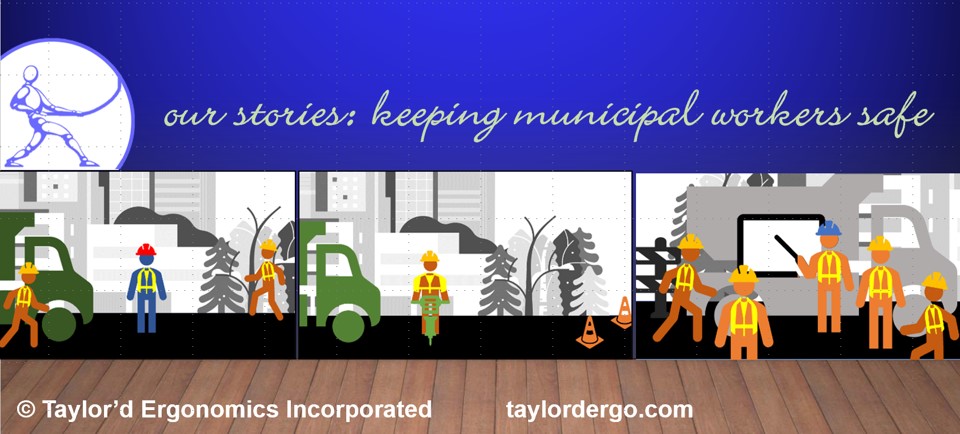 Municipal workers are one of the most important worker groups in our society. Without them, we wouldn’t have clean water, waste disposal, roads, or recreational spaces such as parks and arenas. Without these workers, towns and cities would be chaos. Naturally, everyone can imagine the importance of keeping these workers safe and healthy. One of the top issues that these workplaces struggle with are sprain/strain injuries, also known as Musculoskeletal Disorders (MSDs), resulting from ergonomically “high-risk” tasks.
Municipal workers are one of the most important worker groups in our society. Without them, we wouldn’t have clean water, waste disposal, roads, or recreational spaces such as parks and arenas. Without these workers, towns and cities would be chaos. Naturally, everyone can imagine the importance of keeping these workers safe and healthy. One of the top issues that these workplaces struggle with are sprain/strain injuries, also known as Musculoskeletal Disorders (MSDs), resulting from ergonomically “high-risk” tasks.
Health & Safety champions in these workplaces, both safety professionals and worker safety representatives, are often experts at recognizing these “high-risk” tasks. They know that using “ergonomic” techniques is critical when engineering controls aren’t possible. However, the challenge lies in the process of extracting, proving, communicating, and convincing all workers to use these “best practices”.
Three of the main challenges with identifying and preventing MSDs in municipal work are:
- The work is highly variable due to the ever-changing external environment
- The work changes by season, and
- Some “very high-risk” tasks are only done once or twice per year, making it challenging to cost-justify an engineering control (a piece of equipment that would automate or assist). In these cases, we must rely on workers using “ergonomic techniques” to protect themselves.
These are some of the reasons why one City’s Health & Safety team called us to help with their MSD prevention initiatives. They knew where the injuries were occurring, and wanted a new approach to “ergonomics training.” They wanted to deliver the message that ergonomics can be applied to municipal work.
Often, these workers take the attitude that “I’ll do whatever needs to be done”, and they lift, push and pull things “the way it’s always been done.” This practice sometimes puts their bodies at a risk of injury. While we as citizens appreciate this hard-working attitude, and rarely give much thought to how these jobs get done, keeping our city’s employees injury-free is extremely important.
The Health & Safety team knew that “generic” classroom-style ergonomics training didn’t really work for this group. Municipal workers don’t lift boxes that fit between the knees. They had heard about our approach of developing customised (taylor’d) training. The team envisioned a library of workplace specific techniques that would allow workers to see that “yes, ergonomics does apply to my work”. We at Taylor’d Ergo agreed that this approach would be more effective, and we set out to work with the municipality on this initiative.
Josie (Ergonomist at Taylor’d Ergo), worked face-to-face with many front-line municipal workers in “high risk” jobs over several months. She and the City’s ergonomics champions (the front-line workers) extracted over 100 “ergonomic techniques” specifically applicable to high-risk municipal jobs. Her job was to “prove” and document these techniques in simple, one-page, visual summaries. These could be shared with City workers who needed to “see” how ergonomics can be applied to their job. (Seeing their co-workers in the photos may have been somewhat convincing, too.)
The municipality presented these 100+ techniques to their workers through several media:
- We developed and delivered in-person, hands-on training to introduce the techniques and to provide practice in a “classroom” setting.
- They use the summaries in on-boarding training for new employees.
- The supervisors review department-specific techniques as refreshers in tailgate talks and pre-shift meetings.
We’d love to hear of your creative training ideas… how would you use them?!
People learn in many different ways. Having multiple avenues for disseminating information was a smart move on the Health & Safety team’s part. Once a solid base of content is created, based on proven techniques that are applicable to the workplace, the possibilities for training are endless!

